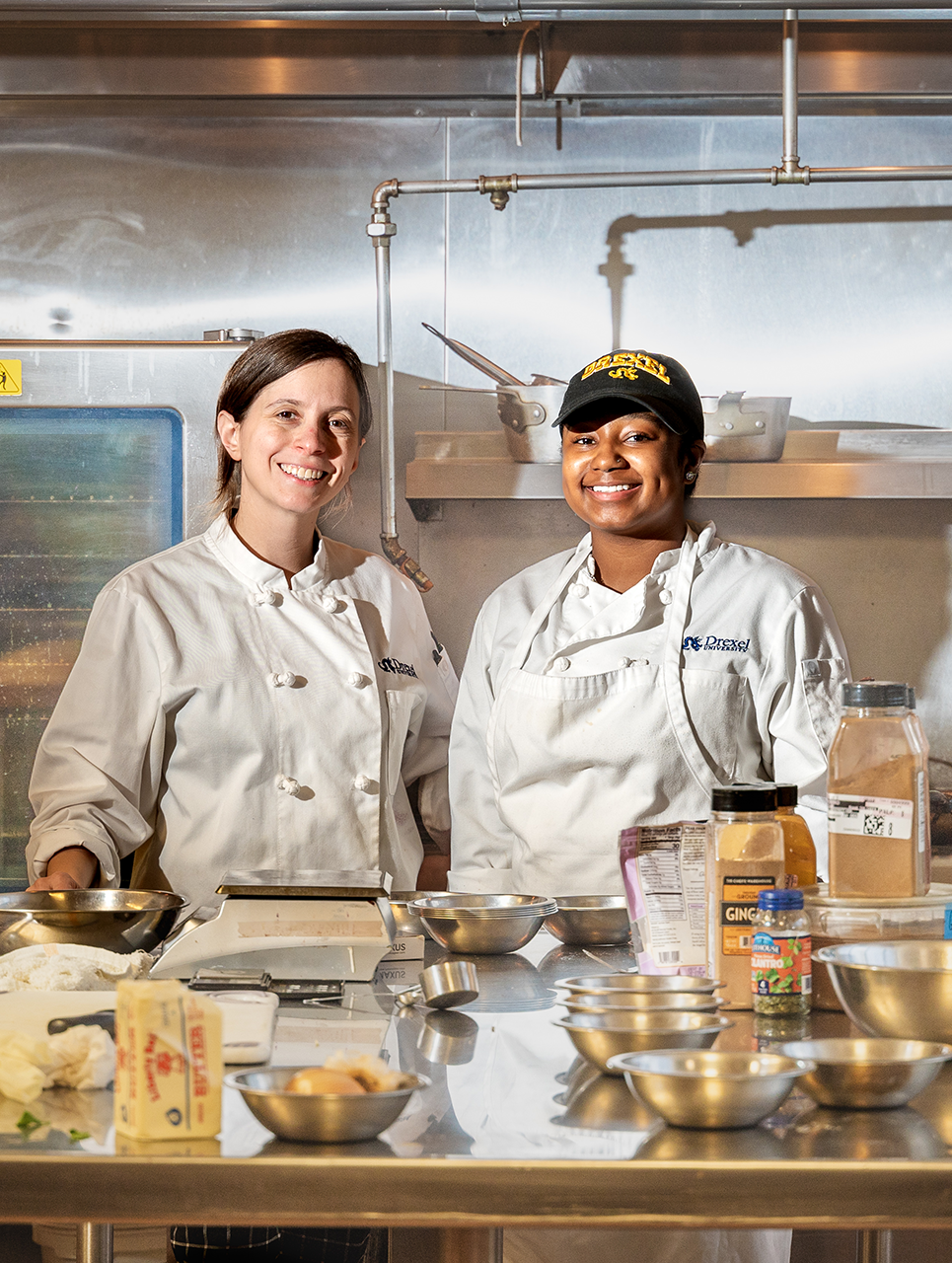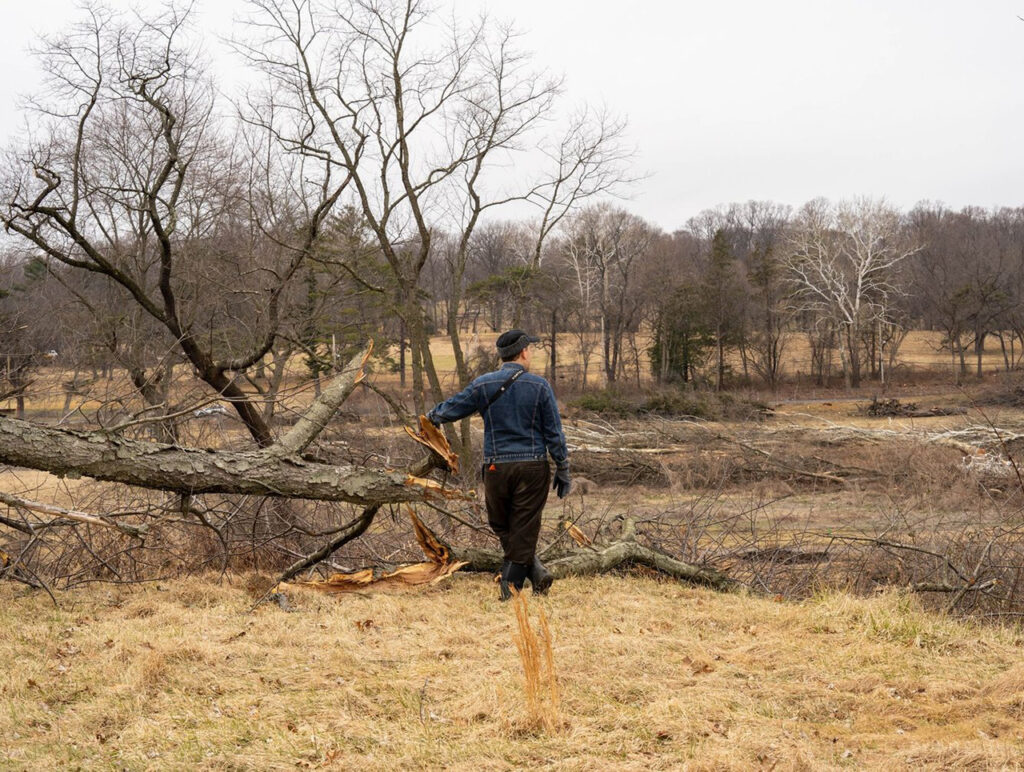It’s said that Isaac Newton was inspired to develop his theory of gravity when an apple fell on his head. But what happened to the apple after it hit him? Did he leave it there, uninterested in its value, and start working on his theory? Or did he pick it up, gather a few more apples, and make some jam?
While this may seem like a trivial question, the historic pastime of gleaning local fruits is still relevant.
On October 16, the Philadelphia Orchard Project (POP) hosted a crabapple gleaning class at The Woodlands, a historic landmark district on the west bank of the Schuylkill River that includes an arboretum of over 1,000 trees. Led by Domenic Vitiello, associate professor of city and regional planning at the Stuart Weitzman School of Design, students of the University of Pennsylvania set out to learn how to forage for crabapples and make their own delectables, like cider and jam.

“It’s just such an easy and fun thing you can do with rather instant gratification,” Vitiello says. He also sees the process as an opportunity to reconnect people to their environment in ways they might not have imagined.
“So many of us are very divorced from nature. Gleaning and foraging are ways to get people back in touch with the fact that, even in cities, we’re living in more biodiverse environments than most of the U.S. countryside.”
Crabapples are commonly planted as street trees and park trees all over Philly, primarily for their beautiful spring flowers — but few realize that they can be harvested and made into cider, jelly and other fall treats.”
— Phil Forsyth, Philadelphia Orchard Project
For urban foresters like Kim Jordan and Phil Forsyth, co-executive directors at POP, the real joy of this class is being able to pass along information on how to utilize Philly’s food forest.
“Crabapples are commonly planted as street trees and park trees all over Philly, primarily for their beautiful spring flowers — but few realize that they can be harvested and made into cider, jelly and other fall treats,” says Forsyth.
Crabapples, a versatile fruit growing throughout Philadelphia and in season late summer through the fall, are about two inches smaller in diameter than cultivated apples. They’re also mouth-puckeringly tart.
Crabapples are typically green before ripening to red and yellow. Two varieties produce the best crabapples for cooking: whitney and chestnut. The fruit can be harvested easily by pulling them off of low-hanging branches by hand, or if a ladder is available, climbing for higher fruits — crabapple trees can grow 15 to 20 feet tall.

The fruits can be used in a variety of dishes. While cakes and jams are popular choices, West Philly’s POP orchards encourage people to think outside the box.
“Some people have made crabapple jelly or dried crabapples. We had a couple of people work together last year and made rose petal jelly,” Vitiello says about his students’ sweet concoctions.
Jena Harris, POP board member and COO of Riverwards Produce, shares that their favorite food to make with crabapples is butter — a simple-to-make spread with a long shelf-life and a perfect holiday gift bag filler.
“It’s a really great way to put the season in a jar,” Harris says. “I like to say, you’re really capturing the fall.”
They use spiced crabapple butter to add depth of flavor and texture to cakes. They recommend flavoring your apple butter to fit your preferences. “You can put it on pancakes, you can put sage in — what’s great about apples is how easy it is to change or enhance the flavor,” Harris says.
Vitiello and Harris agree that cooking with crabapples is a fun and relatively simple activity, but it requires a large quantity of crabapples, specific tools (hand mill or food processor), and of course the physical capacity to forage, glean and process. Additionally, the prep can take several hours if done alone. That’s why Harris believes crabapple butter making is better done with your community.
“It’s a great project if you get some people together. It’s not like making tamales, but if everyone has a task it goes much faster,” Harris says.
A relaxing, messy and festive activity that can be done with family and friends, making crabapple desserts and beverages is a great way to develop an appreciation and richer knowledge of Philadelphia’s bursting food forest.
“Extending the range of things that people can do in urban orchards and gardens and farms helps us work together — in mostly small, but sometimes bigger ways — to address a wider range of food system learning,” Vitiello says.
Philadelphia Orchard Project’s Crabapple Butter Recipe
4 & 1/4 cups chopped crabapples
1 & 3/4 cups water
1/2 teaspoon ground cloves
1/8 teaspoon ground nutmeg
1 & 1/2 teaspoons ground cinnamon
1 cup dark brown sugar
Place all ingredients in a saucepan except the brown sugar. Bring to a boil and simmer for 45 minutes. Beat the apples into a thick pulp and then push the pulp through a vegetable mill or sieve. Return the pulp to the pan and add in the sugar. Bring to a boil and stir until the butter is very thick. Place in a jar and serve when cooled.









